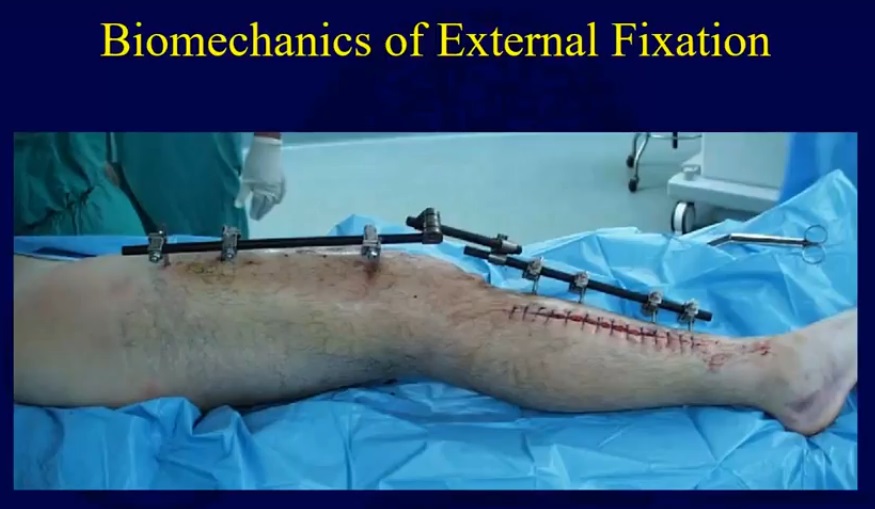EXTERNAL FIXATION
The traditional modern conception of external fixation started with JeanFrancois Malgaigne. The first use of “pins” is credited to Malgaigne who, in 1840, created a simple metal pin in a leather strap for the percutaneous pin treatment of tibial fractures
Advantages
- Less damage to the blood supply of the bone
- Minimal interference with soft-tissue cover
- Rapid application in an emergency situation
- Stabilization of open and contaminated fractures
- Adjustment of fracture reduction and stability without surgery
- Minimal foreign body in the presence of infection
- Bone transport and deformity correction possible
*Broadly classified into, pin fixators and ring fixators.
Pin fixators can be used in four basic configurations
1. Unilateral one-plane configuration.
2. Unilateral two-plane configuration.
3. Bilateral one-plane configuration.
4. Bilateral two plane configuration
Spanning external fixation frame (joint bridging):
- It is indicated for damage-control surgery when the patient (polytrauma), or the limb, or the fracture cannot be definitively managed immediately
- It is used to span areas of severe soft-tissue injury or complex articular fractures and fracture dislocations
- The stability allows time for soft tissues to settle, while CT scans and preoperative planning are performed.
- Unilateral frames are mostly used and the pins should be placed where possible outside the zone of injury and outside the zone of (future) definitive surgery
An external fixator can be made more stable by
1. Increasing the pin diameter
2. Increasing the number of pins
3. Increasing the spread of pins
4. Multiplanar fixation
5. Reducing the bone frame diameter
6. Predrilling and cooling during insertion
7. Radially preload the pins
8. Tensioned wires at 900
9. Stacked frame
Note: a very rigid frame is NOT always good
Complications
- Pin tract infections
- Neurovascular impalement
- Muscle or tendon impalement
- Delayed union
- Compartment syndrome
- Refracture
Courtesy: Saqib Rehman MD
Associate Professor
Director of Orthopaedic Trauma
Temple University
Philadelphia, Pennsylvania, USA
www.orthoclips.com

Leave a Reply